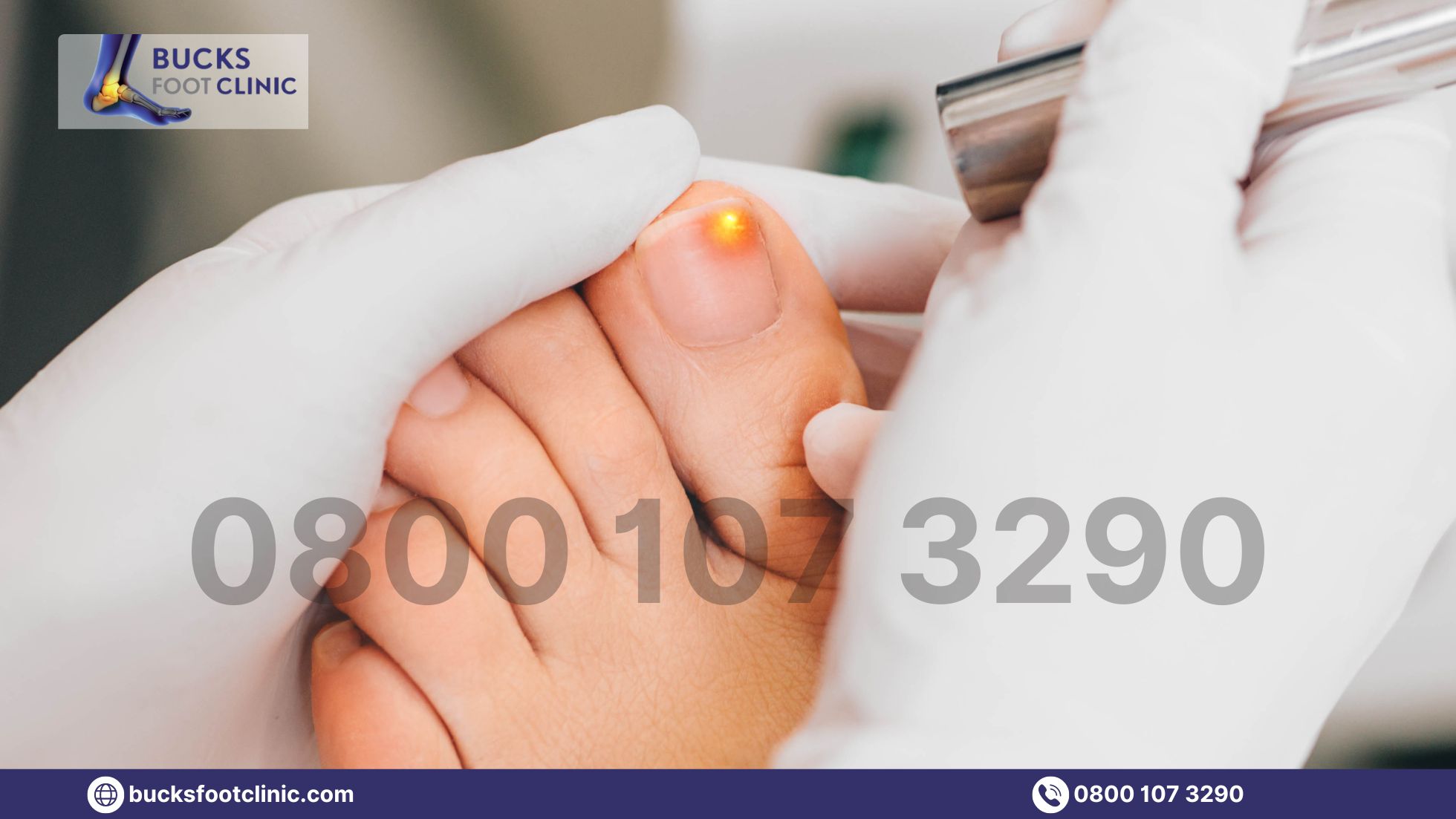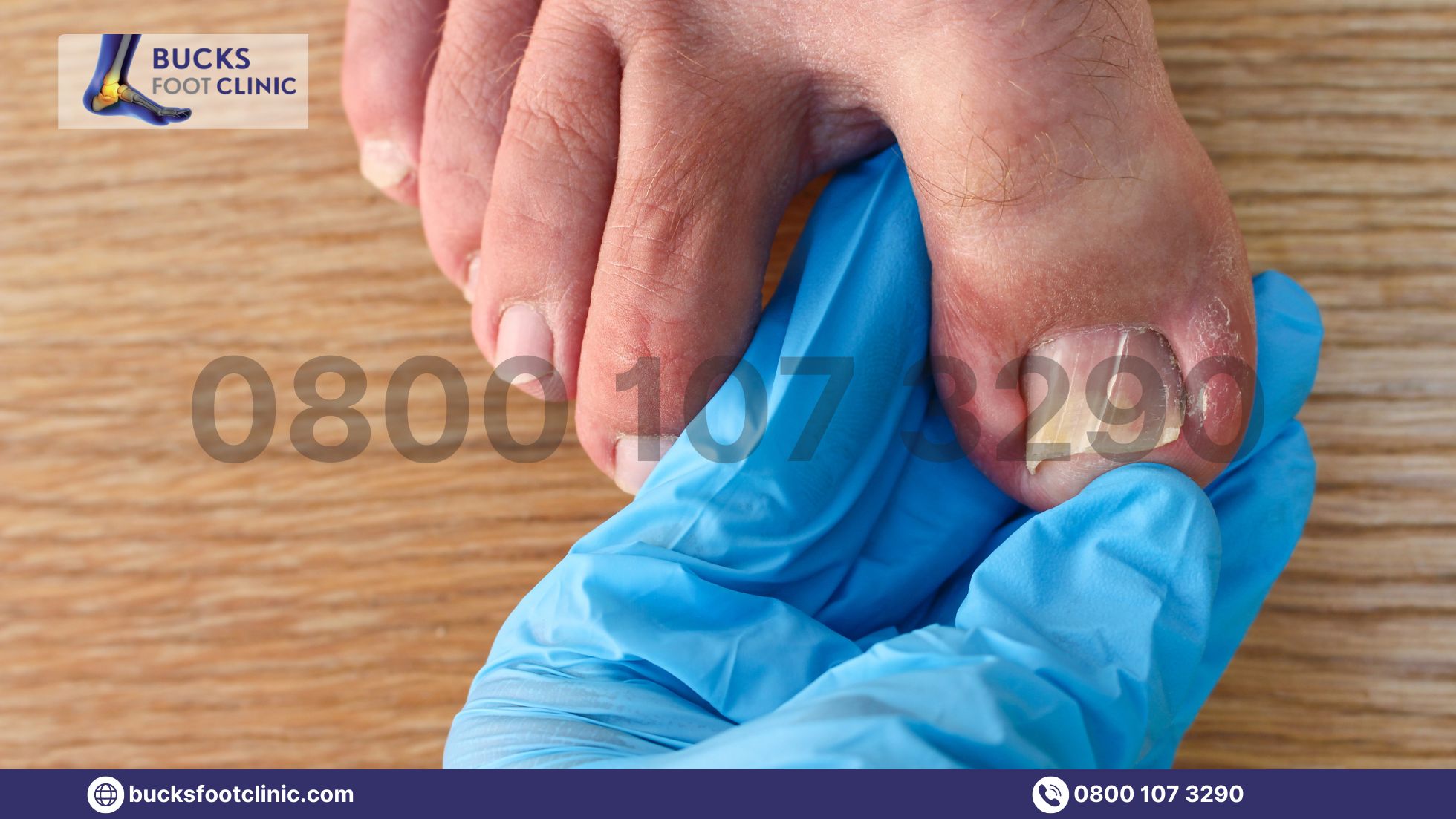
Corns can be a painful and bothersome condition that affects many individuals, particularly the corns on the toes. If you’re dealing with the discomfort and pain of a verruca or corn, it’s important to understand their differences and treatment options. Understanding the different types of corns and knowing the appropriate treatment options is essential for finding relief and maintaining foot health.
A verruca is a viral infection that appears as a rough, raised growth on the feet, while a corn is a hardened area of skin caused by friction or pressure. At Bucksfoot Clinic, we specialise in treating verrucas and corns with various methods, including cryotherapy, salicylic acid treatments, and orthotics.
In this article, we will explore the various types of corns, their causes, and the available corn treatment options. Whether you are dealing with a verruca or a corn, this guide will provide valuable insights to help you find the right solution.
Types of Corns
1.Hard Corns:
Hard corns are the most common type and typically appear on the tops or sides of the toes. They are characterised by a small, round area of hardened skin that may cause discomfort or pain. Hard corns are often caused by friction or pressure from ill-fitting shoes or abnormal foot structure.
2.Soft Corns:
Soft corns usually develop between the toes where the skin is moist and prone to friction. They appear as white, rubbery lesions and can be painful. Soft corns on toes commonly happen if you wear tight or narrow shoes that squeeze the toes together.
3.Seed Corns:
Seed corns are small, shallow corns that tend to develop on the sole of the foot. They can be painful when under pressure. Seed corns are often caused by dry skin or friction from walking barefoot on hard surfaces.
4.Verrucas or Plantar Warts:
The human papillomavirus (HPV) causes verrucas, or plantar warts. They often have a rough, grainy appearance and may appear as small clusters. Verrucas can be painful, especially when walking or standing. People are often confused whether they’re suffering from verruca or corn because of their similar appearance.
Treatment Options
1. Non-Medicated Treatments:
Non-medicated treatments for corns on toes or anywhere else include soaking the affected area in warm water. After that, use a pumice stone to gently file away dead skin, and apply moisturising creams to soften the corn. These methods can help reduce pain and discomfort associated with corns.
2. Medicated Treatments:
Medicated treatments for corns include over-the-counter corn pads or plasters that contain salicylic acid. These products help dissolve the hardened skin of the corn. It is important to follow the instructions carefully when using medicated treatments.
3. Professional Treatment:
In some cases, professional treatment may be necessary, especially for stubborn or recurring corns. A podiatrist or foot specialist can provide expert advice and perform procedures such as verruca or corn removal. They may also assess your foot structure and recommend orthotic devices or footwear modifications to prevent corns from recurring.
Statistics on Corns in the UK
- According to a study conducted by Public Health England, corns and calluses affect approximately 20% of the UK population.
- The same study revealed that corns and calluses were more prevalent in women compared to men.
Corns are a common foot problem in the UK, affecting a significant portion of the population. According to recent statistics, around 1 in 5 adults in the UK experience corns on their feet. This translates to millions of people dealing with the discomfort and pain caused by corns. Furthermore, statistics indicate that corns are more prevalent among certain age groups. Older adults, particularly those aged 65 and above, are more likely to develop corns due to factors such as reduced skin elasticity and changes in foot structure.
Another noteworthy statistic is the impact of footwear on corn development. Research suggests that ill-fitting shoes and high heels are major contributors to corn formation. In fact, studies show that women are more susceptible to corns compared to men, largely due to their footwear choices.
Why Choose Bucksfoot Clinic?
When it comes to corn treatment and foot care, Bucksfoot Clinic is a trusted name in the UK. With experienced podiatrists and high-quality care, they provide comprehensive treatment options for corns on toes and the rest of the foot. From accurate diagnosis to personalised treatment plans, Bucksfoot Clinic ensures that your feet receive the attention they deserve.
Conclusion
Remember, taking care of your feet is an investment in your overall well-being. Whether you are dealing with a corn on the toes or a verruca, seeking appropriate treatment is essential. Explore treatment options, and prioritise foot health for a comfortable and active lifestyle. With the right approach and guidance from a foot specialist, you can enjoy improved foot health and a pain-free lifestyle. Trust in the expertise of Bucksfoot Clinic to provide you with the highest standard of care for your corn treatment needs. Get expert insights now!




Recent Comments